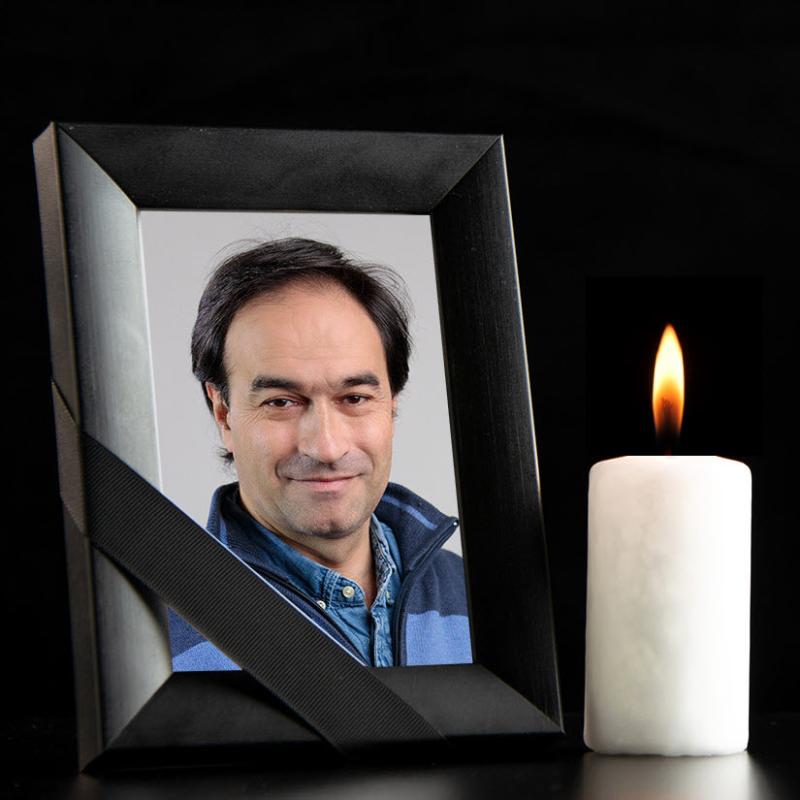
Last weekend, in the 63rd year of his life, our mathematician colleague Gábor Simonyi, the head of the graph theory department, an internationally renowned researcher in graph theory and information theory, passed away.
Gábor made pioneering contributions to the fields of graph theory and information theory, in particular to the theory of graph capacities.
András Gyárfás' recollection:
For many years, Thursday at 5 p.m. is the beginning of the weekly pingpong time at the second floor lounge of the Alfred Rényi Institute of Mathematics. On April 24, during the second hour of the play came Gábor Simonyi, who plays frequently with us but did not plan to do it that day. However, I succeeded to allure him for a pairs game. We won and later left the institute together. He went home to prepare his next day lecture at Szeged about properties of the Schrijver graph.
On April 28, Monday morning, all of us who entered "Renyi", faced with his photo with the shocking news: Gábor Simonyi suddenly died. His students at the 10:15 Graph Theory class of the Budapest Semesters in Mathematics (BSM) waited in vain for his arrival ... And the same is true for his classes at the Budapest Technical University and for his PhD students...
Beside our pingpong connection where we were rivals, we have decades long connection from BSM since our courses are both from the area of combinatorics. Although his main interest relates to information theory (his number one co-author is János Körner), we both were pleased by the impact of our "Gallai-coloring" paper.
I liked very much his humor although I often needed some time to recognize that his puzzling remark is a joke. Gábor was full of plans, he had excellent students, his untimely death is really tragic.
Tardos Gábor visszaemlékezése:
Simonyi Gáborral a matematika hozott össze. A Reiman-szakkörön találkoztunk 1979-ben. Reiman István legendás feladatmegoldó szakköre a matematikai diákolimpiára készített fel. Aztán együtt nőttünk fel. Együtt voltunk 1981-ben a washingtoni diákolimipán. Nagyon irigyeltem: ő minden problémát tökéletesen megoldva teljes pontszámot kapott, míg én két pontot veszítve lemaradtam az első díjról is.
A Műszakin tanult tovább, de később szerencsésen visszatalált a matematikához, és évtizedekig dolgoztunk együtt a Rényi Intézetben. Gábor ebből a kerülőből is jól jött ki: kapcsolata a Műszakival mindig megmaradt, és egyik alapítója lett a később beinduló műszakis matematikus képzésnek.
45 éves barátságunk sokkal szélesebb volt a matematikánál. Ott voltam, amikor Gábor megtanult síelni Donovalyban, egyszerre született az ő Emil fia és az én Tamara lányom, a gyerekekkel is sokat összejártunk. Amikor valamelyikünk életében komolyabb nehézség adódott kölcsönösen számíthattunk és számítottunk is a másikra.
De persze megmaradt a matematika is. Szerettem vele dolgozni. Jó volt az első emeleti irodájában beszélgetni, és közben gráfokat rajzolgatni a táblára. Ebből tíz közös gráfszínezéses cikk lett, amikre mindketten büszkék voltunk. Sokat dolgozott külföldön, Amerikában, Franciországban, Olaszországban. Fél évre hozzám is kijött családostul Kanadába, amikor ott dolgoztam. Együtt mentünk számos belföldi és külföldi konferenciára, legutóbb tavaly Szegedre és Párizsba. Számtalanszor hallgattuk egymás mellett ülve a csütörtöki kombinatorika szeminárium előadásait.
Sokszor ő adott elő, nagyon jó előadó volt. Legközelebb én adok elő a szemináriumon, képtelen vagyok felfogni, hogy Gábor nem fog ott ülni.
János Körner's recollection:
Gábor Simonyi won a gold medal at the International Mathematics Olympiads back in 1981 with a flawless and complete elaborate and yet, he did not feel good enough to study mathematics. At the end of 5 years of engineering studies at Budapest Technical University Professor László Győrfi invited him to a seminar where I exposed my approach to perfect hashing and graph entropy, with the idea that Gábor should become a graduate student in mathematics under my supervision.
Within a year we wrote our first joint paper on hashing, and a lifelong friendship was born. At that time, I was an information theorist trying to apply my craft in combinatorics. Gábor was a brilliant problem solver and a math enthusiast. His warm smile and his brilliance enlightened every minute we spent together. He was a constant source of ideas and inspiration. We wrote 15 joint papers, and discussed our problems and plans about everything in life. His purity and his complexity were dazzling.
On and off I conjectured a characterization of perfect graphs through graph entropy. He came up with the core idea of the proof during the combinatorics conference in Eger in 1987. This led us to a generalization of the concept of perfect graphs to relative perfection in a paper with Tuza. The key proof used Gallai colorings of edges in graphs and led Gábor and András Gyárfás to much quoted results on edge colorings. After 6 unforgettably cheerful months in Paris in 1988 we obtained a breakthrough on a much studied and apparently purely combinatorial problem of Rényi on the maximum number of pairwise qualitatively independent $k$--partitions of an $n$-set. A simple information-theoretic upper bound on this number for fixed $k$ and arbitrary $n$ was folklore, but in the opposite direction no nontrivial bound was known. None of the two bounds seemed to be tight when Gábor and I showed an asymptotic improvement on the trivial lower bound alongside with a general framework to deal with similar problems, reducing them to a general question about the Shannon-type capacity of families of directed graphs. We called the capacity of directed graphs Sperner capacity. At the end of 1989 I left Hungary, but our mathematical correspondence never stopped and led to many more papers, both joint and separate. Gábor's fidelity to this part of mathematics in terms of research articles and entire courses at the Technical University and the Budapest Semesters in Mathematics is a beautiful testimony to our unrelenting mathematical friendship.
